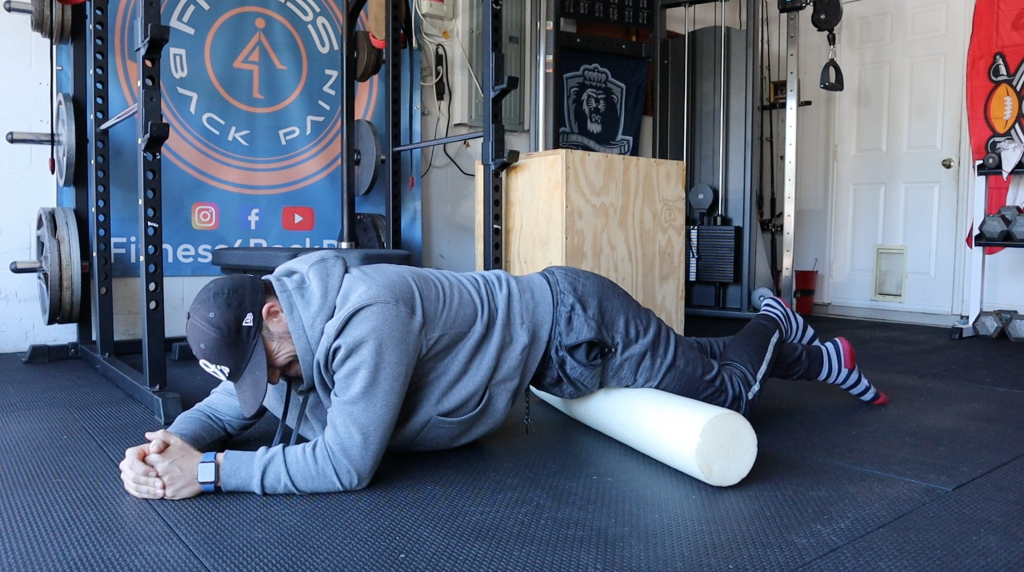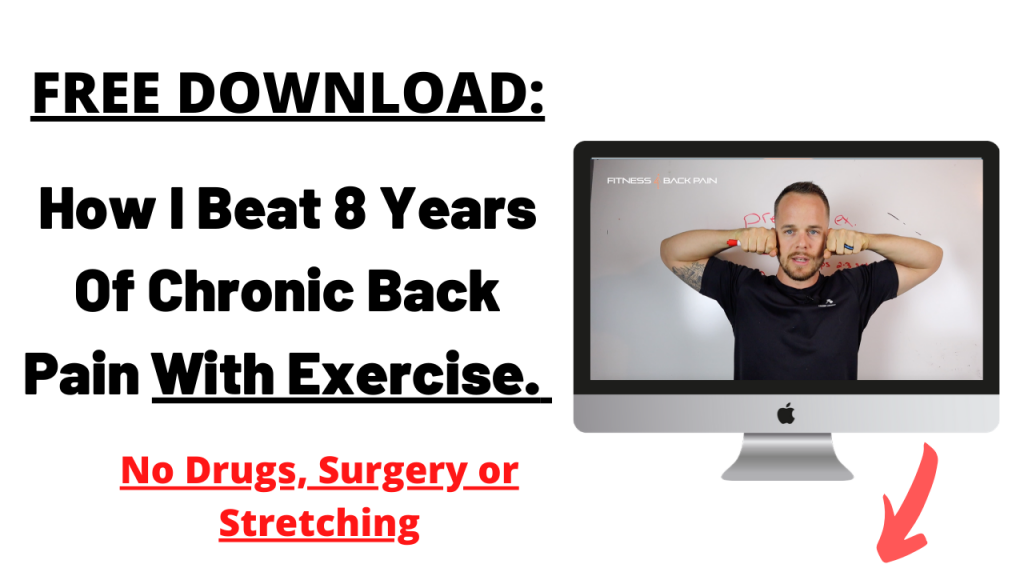Stretching Vs Foam Rolling | Which is better for back pain relief?
Have you ever wondered whether or not the foam rolling you’re doing is actually worth the time?
Or maybe those new stretches you’ve been trying out in hopes of getting a little relief from your low back tension.
Is it all worth it and which tool (stretching or foam rolling) is better?
In today’s post, I am going to be breaking down where we are in the fitness industry with whether or not foam rolling and stretching is actually worth it for low back pain relief.
I’ll also be covering when the best time to foam roll is and how much to do as well as how to approach stretching.
Is It Better To Stretch Or To Foam Roll?
When it comes to which is better, stretching vs foam rolling I am personally not a big fan of either one. I feel like it’s a slippery slope when you start trying to do more foam rolling or stretching to chase aches and pains around the body.
Stretching and foam rolling gives you this false sense or relief while doing it and for a short window afterwards but for most people, the tightness, pain or random ache finds it’s way back (unless you’re addressing the root cause).
I believe that both stretching and foam rolling for low back pain can be a great tool but is NOT the solution to persistent low back pain.
Should I Roll Out Before Stretching?
When it comes to using both stretching and foam rolling there is definitely an order of use that should be considered.
When I am working with soeone who is wnating to use both stretching and foam rolling as a means of recovery from workouts i always suggest that you foam roll first for 2-5 minutes on the targeted areas where you will be stretching.
There are a number of reasons for this but overall it just helps prime the area for the attention you will be giving it with the stretching.
Things like body temperature, atmospheric temperature (cold or hot outside), your current state of recovery from previous workouts (are you sore?) will all impact how your body responds to you just jumping in and trying to stretch a tissue.
So this is why I suggest you spend a little time on the foam roller before stretching out.
If you want to hear more about my anti-stretching approach to low back pain go here.
Is It Bad To Foam Roll Every Day?

Whether it’s bad to foam roll every day or not will depend on WHY you’re foam rolling in the first place.
If you’re doing it because it’s the only way you can get relief from your chronic glute tightness then I would say the foam rolling is more of a band-aid approach. What would serve you better is to trying and figure out why your glutes are chronically tight in the first place.
I am comfortable with the thought that daily “body maintenance” in the form of some kind of recovery protocol i.e light stretching, foam rolling, or walks is a great way to unwind and just feel overall good. But when these tools become an addiction to quick fixes rather than seeking out the root issue is where the problem comes in.
Can Foam Rolling Replace Stretching?
I don’t think foam rolling should replace stretching. From an anatomy standpoint, foam rolling and stretching are targeting different things.
Foam rolling only really impacts the superficial layer of tissue such as the skin and fascia. while stretching (if done correctly) works on a totally deeper level than that.
So to give up on one or be completely sold out to one over the other would be unnecessary.
Now I think you could spend less time doing both of these and from a chronic pain perspective you may end up feeling better depending on how much you relied or THINK the tool was actually helping.
So my final answer would be to keep both if you enjoy them as a part of your recovery. If you don’t do one over the other and your getting along just fine I wouldn’t add anything else that would increase the amount of time you spend away from your friends and family.

